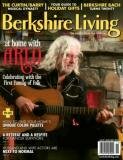
MUSIC REVIEW: Emerson Quartet with David Shifrin at Tanglewood
Ozawa Hall
July 6, 2010
Reviewed by Clarence Fanto
![Emerson Quartet [photo by Lisa-Marie Mazzucco]](/sites/default/files/u7/Emerson%20Quartet%20by%20Lisa-Marie%20Mazzucco.jpg) LENOX (July 7, 2010) — Since it was formed in 1976, the year of the nation's Bicentennial, the Emerson String Quartet (named for Ralph Waldo Emerson, of course) has occupied the zenith of the chamber-music firmament. Whether it performs Mozart, Shostakovich, Bartok, Ives, Barber or contemporary repertoire by living composers, the group is regarded as unmatched in precision of execution, depth of interpretation, and the sheer beauty of its playing.
LENOX (July 7, 2010) — Since it was formed in 1976, the year of the nation's Bicentennial, the Emerson String Quartet (named for Ralph Waldo Emerson, of course) has occupied the zenith of the chamber-music firmament. Whether it performs Mozart, Shostakovich, Bartok, Ives, Barber or contemporary repertoire by living composers, the group is regarded as unmatched in precision of execution, depth of interpretation, and the sheer beauty of its playing.
Likewise, David Shifrin is a clarinetist extraordinaire, widely honored as a soloist, for his performances in and with orchestras and as a guest artist with chamber groups. For Mozart's Clarinet Quintet in A, arguably among the composer's very finest works in any genre, he uses the basset clarinet (additional keys enable lower notes to be played) in order to perform the work in its original version.
No surprise, then, that the combination of Shifrin and the Emerson attracted a capacity audience, augmented by a large lawn crowd, to Ozawa Hall on Tuesday evening (July 6) for an all-Mozart program. With one of the hottest, muggiest evenings in recent memory to contend with, the players nevertheless turned in performances of charm, subtlety, grandeur and polish — poignant and introverted as Mozart intended in portions of the quintet and the "Dissonance" Quartet that preceded it, joyous and outgoing in other sections of the same works.
This listener first became enamored of the Clarinet Quintet in a classic 1956 LP by jazz and swing icon Benny Goodman with members of the Boston Symphony. Recorded at Tanglewood (along with Clarinet Concerto) when the summer season was known as the Berkshire Festival, the recording has never gone out of print and remains available in multiple formats, billed as Mozart at Tanglewood. In 1986, Goodman died in Manhattan while playing Mozart on his clarinet.
Put simply, Shifrin's collaboration with the Emerson players sets the contemporary standard for great Mozart playing. His quicksilver, pure tone wells up from silence to uncanny effect, and he blends harmoniously with the Emersonians. This is desert-island music, composed two years before Mozart's death and reflecting his fascination with the Freemason movement. Shadings of light and dark, of bumptious humor and deep melancholy, alternate in quick succession, and the slow-movement larghetto reached sublime depths of profundity that sent chills up the spine despite the fetid weather conditions (fortunately, Ozawa Hall is moderately air-cooled).
By the way, portions of the quintet were used in the most-viewed TV episode on record — the "Goodbye, Farewell and Amen" 1981 series finale of M*A*S*H, in which a major character teaches the piece to Chinese POWs.
As a curiosity, the fragmentary first-movement of an earlier and rarely heard Mozart clarinet quintet was offered as an encore. Consisting of an exposition and a few measures of a development section that end abruptly, the piece reflects little of the composer's genius — no surprise that it was abandoned.
The Emersons opened the concert with a series of Bach fugues from "The Well-Tempered Clavier" as adapted and transcribed for quartet by Mozart. It was instructive to hear how these seminal works inspired Mozart to develop his own skills in counterpoint and fugue composition.
Also before intermission, his "Dissonance" Quartet No, 19 in C, K. 465, was performed with grace and humor befitting a work dedicated to Mozart's idol, Haydn (inscribed to him as "O great man and my dearest friend.") The quartet's daring harmonic explorations, very advanced for the time, qualify it as a landmark in advancing chamber-music composition to the next level.
As is their custom, Emerson violinists Eugene Drucker and Philip Setzer traded off first-chair positions. Along with violinist Lawrence Dutton, they perform while standing (only cellist David Finckel gets to sit, for obvious reasons). Despite moments of strain occasioned by the heat, the group performed at the highest imaginable level. With nine Grammys and countless other honors to their credit, one can only cheer and hope for many more years of perfect harmony.
Clarence Fanto reviews music for Berkshireliving.com and is a contributing editor of Berkshire Living magazine.

 Delicious
Delicious Digg
Digg StumbleUpon
StumbleUpon Propeller
Propeller Reddit
Reddit Magnoliacom
Magnoliacom Newsvine
Newsvine Technorati
Technorati
